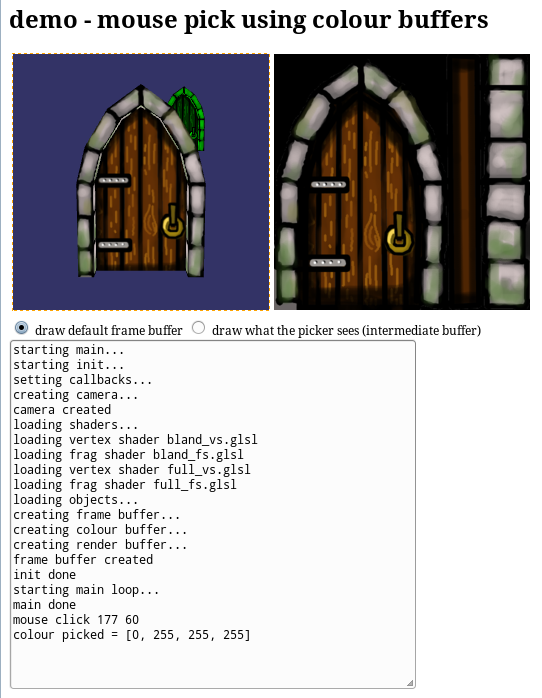[index]
Anton's Research Ramblings
11 July 2012
3D Picking Based on a Colour Buffer
I took me exactly 1 day yesterday to implement colour picking. I worked from the chapter in the book that I reviewed
in the last post. It's an alternative approach to the ray-casting method. I have to say, it is actually more
involved to set up than the ray casting method, so I disagree with the book authors, but it's also a nice exercise
because it shows you how to render to intermediate buffers.

Click on the image to go to the demo. I implemented a terminal using a text box, which turned out to be rather
handy. It's still hard to find those really annoying errors that GL catches when you call a function
incorrectly, but at least you can see at what point it gets up to.
Next Steps
I want to try to modify my colour picker demo to display both buffers at once - either with separate viewports, or
with separate HTML5 canvas'.
I would like to try a post-processing demo from the WebGL book. I think it should be similar to how I used 2 buffers
in the picking demo, but I'd like to see if there are any implementation differences when it comes to editing the
image. What can you use to do image processing? This might actually be a nice approach to do things like appending
labels to visualisations - who knows.
I want to start building some scientific-quality visualisation tools. I'll start with a WebGL programme that
displays 2D line plot charts, and build up from there. I want to make sure that I have all of the important bits
like scales, axes, and error bars. I think when I move into 3D that I will need to work in a couple of different
camera spaces. It would be nice to have these things interactive - loading plots from your hard disk, allowing you
to manipulate colour, styles and, and ranges of plots, etc.
